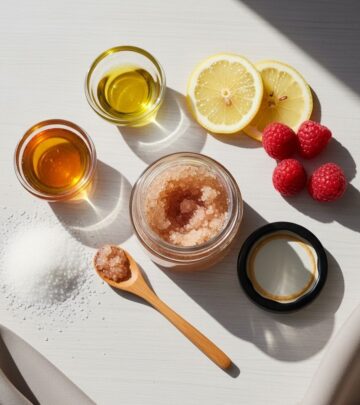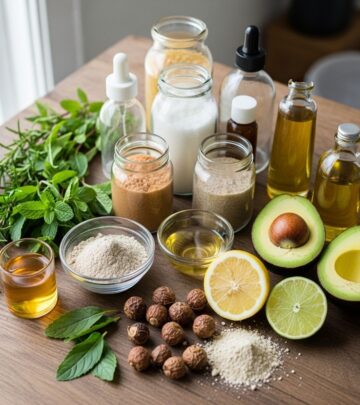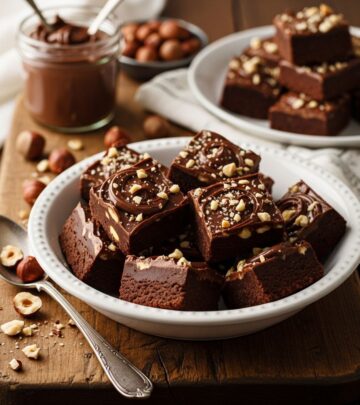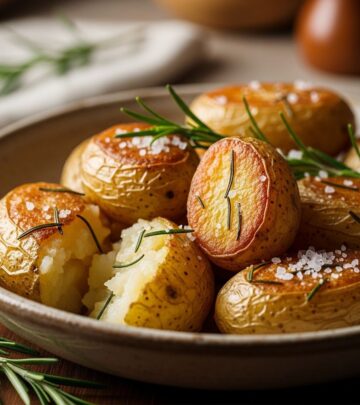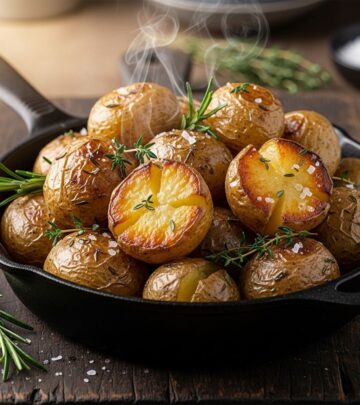Nut-Free Macarons Recipe: 9 Steps To Allergy-Friendly Delights
Master the art of making allergy-friendly French macarons with alternative flours

Image: HearthJunction Design Team
Introduction to Nut-Free Macarons
Traditional French macarons are typically made with almond flour, making them off-limits for anyone with nut allergies. Fortunately, creative bakers have developed delicious alternatives that capture the same delicate texture and flavor without using any nuts. These nut-free macarons offer all the elegance and taste of the classic French delicacy while being accessible to those with nut allergies or dietary restrictions.
Nut-free macarons maintain the characteristic crisp shell and chewy interior that macaron lovers crave. By substituting ingredients like oat flour, white rice flour, or ground seeds for the traditional almond flour, these treats become allergy-friendly without sacrificing quality. The result is a batch of beautiful, colorful sandwich cookies that are just as impressive as their nut-based counterparts.
Understanding Nut-Free Macaron Ingredients
Creating successful nut-free macarons requires understanding the alternative ingredients that replace almond flour. Here are the key components you’ll need:
Alternative Flours
Instead of almond flour, nut-free macarons use one of the following:
- Oat Flour: Creates macarons with a delicious oatmeal-like flavor, perfect for oatmeal cream pie variations.
- White Rice Flour: Offers a neutral taste that works well with various flavorings and colors.
- Ground Seeds: Pumpkin seeds or sunflower seeds can be ground into a flour-like consistency as an excellent almond substitute.
Other Essential Ingredients
The remaining ingredients are similar to traditional macarons:
- Egg Whites: Provide structure and create the meringue base.
- Granulated Sugar: Stabilizes the meringue and adds sweetness.
- Powdered Sugar: Combines with the alternative flour for the dry mixture.
- Cream of Tartar: Helps stabilize the egg whites (optional but recommended).
- Gel Food Coloring: Adds visual appeal without affecting the batter consistency (optional).
Equipment Needed
Before starting your nut-free macaron journey, gather these essential tools:
- Stand Mixer or Hand Mixer: For whipping egg whites into a stiff meringue.
- Food Processor: To finely grind alternative flours if necessary.
- Sifter or Fine-Mesh Sieve: For ensuring smooth, lump-free dry ingredients.
- Piping Bags: One for the macaron batter and another for the filling.
- Round Piping Tip: Approximately 1/2 inch in diameter for consistent macaron shells.
- Baking Sheets: Heavy-duty sheets that won’t warp in the oven.
- Silicone Baking Mats or Parchment Paper: To prevent sticking.
- Kitchen Scale: For precise measurements (highly recommended).
- Rubber Spatula: For folding the dry ingredients into the meringue.
Nut-Free Macaron Base Recipe
This versatile recipe can be adapted based on which alternative flour you choose to use. The measurements provided will yield approximately 20-24 completed macaron sandwiches.
Ingredients
- 120-135g egg whites (about 4 large eggs), room temperature
- Pinch of salt
- 50-52g granulated sugar
- 230-250g powdered sugar
- 140g alternative flour (oat flour, white rice flour, or finely ground seeds)
- 2g cream of tartar (optional)
- 1 teaspoon vanilla extract or other flavoring (optional)
- Gel food coloring (optional)
For the Filling
- 1 cup (226g) unsalted butter, softened
- 3-4 cups (360-480g) powdered sugar
- 1-2 tablespoons heavy cream or milk
- 1 teaspoon vanilla extract or flavoring of choice
- Pinch of salt
Step-by-Step Instructions
Preparing Your Workspace
Begin by organizing your kitchen and preparing your equipment. Line two baking sheets with silicone mats or parchment paper. Fit a large piping bag with a round tip and set aside. Ensure all ingredients are measured precisely using a kitchen scale for best results.
Preparing the Dry Ingredients
Place your alternative flour (oat flour, rice flour, or ground seeds) and powdered sugar in a food processor. Process for about 1 minute to ensure the mixture is extremely fine. Sift this mixture into a large bowl, discarding any large pieces that don’t pass through the sieve. If necessary, process and sift again until all dry ingredients are fine enough to pass through the sieve.
Making the Meringue
In the bowl of a stand mixer fitted with the whisk attachment, combine the egg whites, salt, and cream of tartar (if using). Begin mixing on medium speed (level 4 on a KitchenAid) for about 3 minutes until foamy. Gradually add the granulated sugar while continuing to mix. Increase the speed to medium-high (level 7) and whip for another 3 minutes. Increase to level 8 for another 3 minutes, then whip at the highest speed for a final minute. At this point, your meringue should be very stiff and form rigid peaks when the whisk is lifted. If using food coloring or flavoring, add it now and mix briefly to incorporate.
Creating the Macaron Batter
Add all the sifted dry ingredients to the meringue at once. Using a rubber spatula, begin folding the dry ingredients into the meringue. Use a gentle but firm folding motion, scraping the sides and bottom of the bowl. Continue folding until the batter reaches the proper consistency – when you lift the spatula, the batter should flow like lava and form a ribbon that disappears back into the rest of the batter within about 30 seconds. This typically takes about 40-50 folds.
Piping the Macarons
Transfer the batter to the prepared piping bag. Holding the bag perpendicular to the baking sheet, pipe 1.5-inch rounds, spacing them at least 1 inch apart. Once all macarons are piped, firmly tap the baking sheets against the counter 2-3 times to release any air bubbles. Let the piped macarons rest at room temperature for 30-60 minutes, until they develop a skin and feel dry to the touch when lightly pressed.
Baking
Preheat your oven to 300°F (150°C). If your oven has a strong bottom heating element, consider double-stacking your baking sheets to prevent the macaron bottoms from browning too quickly. Bake one sheet at a time for 15-18 minutes, rotating the pan halfway through baking. The macarons are done when they form “feet” (the ruffled bottom edge) and can be gently lifted from the baking mat without sticking. Allow the baked shells to cool completely on the baking sheets before attempting to remove them.
Making the Filling
While the macaron shells cool, prepare the buttercream filling. In a large bowl, beat the softened butter until light and fluffy, about 2-3 minutes. Gradually add the powdered sugar, 1 cup at a time, mixing well after each addition. Add the vanilla or other flavoring, salt, and enough cream or milk to achieve a smooth, pipeable consistency. Transfer the buttercream to a piping bag fitted with a round tip.
Assembling the Macarons
Once completely cooled, pair macaron shells of similar size. Pipe a dollop of filling (about 1-2 teaspoons) onto the flat side of one shell, then gently press the flat side of the matching shell on top to create a sandwich. Be careful not to press too hard, as the shells are delicate.
Maturing and Storage
For the best flavor and texture, place the assembled macarons in an airtight container and refrigerate for at least 24 hours before serving. This “maturing” process allows the flavors to meld and the filling to slightly soften the interior of the shells. Macarons can be stored in the refrigerator for up to 1 week or frozen for up to 3 months.
Troubleshooting Common Issues
Even experienced bakers encounter challenges when making macarons. Here are solutions to common problems specific to nut-free versions:
Hollow Shells
If your macarons have empty space between the top and bottom of the shell, this could be due to undermixed batter, oven temperature that’s too high, or removing the macarons from the oven too soon. Ensure your batter reaches the proper consistency and consider using an oven thermometer to verify temperature accuracy.
No Feet Forming
The distinctive “feet” of macarons may not form if the shells haven’t rested long enough before baking or if the oven temperature is too low. Make sure your piped macarons develop a skin before baking, and check that your oven is properly preheated.
Cracked Tops
Cracking often occurs when the shells haven’t rested long enough or when the oven temperature is too high. Alternative flours may need slightly longer resting times than traditional almond flour macarons.
Grainy Texture
This is particularly common with seed-based alternatives. Ensure your dry ingredients are processed finely enough and properly sifted. Multiple processing and sifting cycles may be necessary to achieve the right texture.
Flavor Variations
Once you’ve mastered the basic nut-free macaron recipe, try these exciting flavor combinations:
Oat Flour Variations
- Oatmeal Cream Pie: Add cinnamon to the shells and fill with cinnamon buttercream.
- Maple Oat: Add maple extract to both shells and filling.
Rice Flour Variations
- Lemon: Add lemon zest to the shells and fill with lemon curd-infused buttercream.
- Chocolate: Add cocoa powder to the dry ingredients and fill with chocolate ganache.
Seed Flour Variations
- Matcha: Add matcha powder to the dry ingredients and fill with white chocolate ganache.
- Berry: Add freeze-dried berry powder to the shells and fill with berry-flavored buttercream.
Frequently Asked Questions
Q: Why do my nut-free macarons crack during baking?
A: Cracking usually occurs when the shells haven’t rested long enough before baking or when the oven temperature is too high. Alternative flours often require longer resting times than traditional almond flour – aim for at least 45-60 minutes of rest time.
Q: Can I make these macarons in advance for an event?
A: Absolutely! In fact, macarons often taste better after “maturing” in the refrigerator for 24-48 hours. They can be made up to a week in advance and stored in the refrigerator, or frozen for up to 3 months.
Q: Are these macarons gluten-free?
A: It depends on which alternative flour you use. Rice flour and seed-based versions are naturally gluten-free. If using oat flour, make sure it’s certified gluten-free if you need to avoid gluten completely.
Q: Why is my nut-free macaron batter too runny?
A: Overmixing is the most common cause of runny batter. Alternative flours sometimes require less mixing than almond flour versions, so be particularly careful during the folding stage.
Q: Can I use liquid food coloring instead of gel coloring?
A: Gel food coloring is strongly recommended as liquid coloring adds moisture to the batter, which can adversely affect the texture and structure of your macarons.
Conclusion
Nut-free macarons open up a world of possibilities for those with allergies or dietary restrictions. While they require attention to detail and practice, the results are well worth the effort. By understanding the unique properties of alternative flours and following the techniques outlined in this guide, you can create beautiful, delicious macarons that everyone can enjoy. Remember that macaron-making is both a science and an art – each batch is an opportunity to refine your skills and express your creativity through flavors, colors, and fillings.
References
- https://flourdeliz.com/oatmeal-cream-pie-macarons
- https://www.youtube.com/watch?v=tRb-lA6_GnM
- https://www.bakewithayesha.com/bakewithayesha/2020/05/29/detailed-french-macarons-without-almonds-nut-free-macarons/
- https://honestcooking.com/nut-free-macaron-recipe/
- https://www.youtube.com/watch?v=G8Y3V1t0IHc
Read full bio of Anjali Sayee


